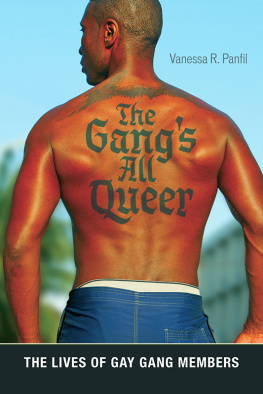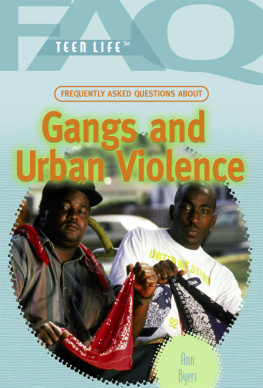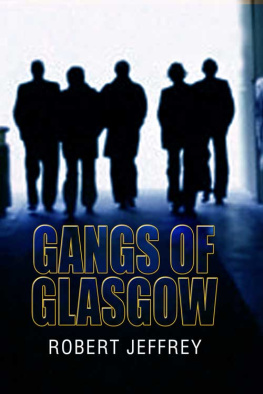SAGE Publications Ltd
1 Olivers Yard
55 City Road
London EC1Y 1SP
SAGE Publications Inc.
2455 Teller Road
Thousand Oaks, California 91320
SAGE Publications India Pvt Ltd
B 1/I 1 Mohan Cooperative Industrial Area
Mathura Road
New Delhi 110 044
SAGE Publications Asia-Pacific Pte Ltd
3 Church Street
#10-04 Samsung Hub
Singapore 049483
Alistair Fraser 2017
First published 2017
Apart from any fair dealing for the purposes of research or private study, or criticism or review, as permitted under the Copyright, Designs and Patents Act, 1988, this publication may be reproduced, stored or transmitted in any form, or by any means, only with the prior permission in writing of the publishers, or in the case of reprographic reproduction, in accordance with the terms of licences issued by the Copyright Licensing Agency. Enquiries concerning reproduction outside those terms should be sent to the publishers.
Library of Congress Control Number: 2017940488
British Library Cataloguing in Publication data
A catalogue record for this book is available from the British Library
ISBN 978-1-47391-189-5
ISBN 978-1-47391-190-1 (pbk)
Editor: Natalie Aguilera
Editorial assistant: Delayna Spencer
Production editor: Sarah Cooke
Marketing manager: Lucy Golding
Cover design: Wendy Scott
Typeset by: C&M Digitals (P) Ltd, Chennai, India
Printed in the UK
Preface
Since 2004, the Sage Key Approaches to Criminology series has been publishing books that bring together distinct disciplines or fields in order to reflect and celebrate criminologys interdisciplinary nature and focus. Books in the series offer advanced level undergraduate students, as well as postgraduates and established lecturers, not only a way in to a subject and an overview of its key theories and concepts, but also a guide to less familiar discussions and debates. The aim of the KAtC series, then, is to provide both a comprehensive introduction to a topic, and also to advance discussion and move debates forward into areas previously sidelined or neglected. It was always intended that authors in the series would be not simply experts in the field (thats a given), but that they should be known for setting new agendas and bringing international perspectives and case studies to the topic.
With this in mind, it seems especially fitting that the latest book in the series should be Gangs & Crime: Critical Alternatives by Alistair Fraser. The issue of gangs and crime has remarkable longevity, eliciting fear and excitement in the popular media, featuring in the rhetoric and manifestos of politicians, and being a central concern of academic sociological studies, including several ground-breaking ethnographies, for very nearly a century. This new book situates the gang within these historical and current contexts, bringing contemporary debates into dialogue with previous generations of scholarship. As Alistair says, the image of the gang runs deep in our collective consciousness and, with every new report of gang warfare on the streets or in our prisons, we draw on a vast cultural reservoir of words, images, labels and tropes going back at least to the classic work of the Chicago School to make sense of what we are witnessing.
I am particularly delighted to see the publication of Gangs & Crime in the Key Approaches to Criminology series because it is written by the foremost expert in global gangs, youth subculture and gang identity. Alistair Fraser is a world-renowned urban sociologist, bringing to his work a creative methodological approach and a genuinely international perspective. Having recently returned to Scotland after several years based in Asia, Ali is ideally placed to critically compare evidence, experience and literature from the four key locations he focuses on here: Glasgow, Chicago, Hong Kong and Shanghai. But of course the book is so much more than this. Alis energy, knowledge and passion for his subject leap off the page, and this book rewards close and attentive reading. Gangs & Crime: Critical Alternatives is not only a groundbreaking text, then. It is also, quite simply, a cracking read.
Acknowledgements
If it takes a village to raise a child, it takes an academic village to build a book. The foundations were cast during my work and study at the University of Glasgow, as part of the Scottish Centre for Crime and Justice Research, among a community of scholars Im proud to call colleagues today. The bricks and mortar of the comparative approach were formed during time spent with John Hagedorn at the University of Illinois-Chicago, and latterly working alongside Karen Joe-Laidler at the University of Hong Kong; both have acted as tremendous mentors and critical friends. Assistance with the scaffolding of the book was provided by the work of Helen Li, Kryzsiu Jankowski and Kathleen Lau, and successive groups of fantastic students on classes in Youth Crime in the Global City and Youth and Delinquency in Hong Kong and Glasgow. Discussions with friends and colleagues in Hong Kong provided the finishing and roofing thanks to Maggy Lee, Peng Wang, Dan Matthews, Scott Veitch and Denise Tang as did conferences and seminars at various universities in Europe, Australia, Asia and North America. Thanks to Sveinung Sandberg, Katja Franko, Emmeline Taylor, Dan Woodman, Alison Young, Steve Threadgold, David Brotherton, Rafa Gude, Audrey Palama, Dave Farrugia, Ben Crewe, Michele Burman, Andy Furlong, Tim Newburn, Nic Groombridge and Rob Reiner who organised or participated in these sessions.
Thanks are also due to the kind souls who contributed PhD theses, work-in-progress, published and unpublished materials Vincent Cheng, Elke van Hellemont, Kath Murray, Dick Hobbs, Gary Armstrong, Tara Young, Tony Ellis, Susie Hulley, Patrick Williams, Becky Clarke and Russell Turner and to the practitioners who advised on current UK gang policies and strategies: Rachel Horan, Jane Padmore, Phil Sutcliffe and John Poyton. Special thanks to Rob Ralphs for helping with these connections. Some of the empirical work drawn on was carried out collaboratively with academics Angela Bartie, Colin Atkinson and Leona Li and practitioners; thanks to Ah Bo at HKYWCA for his assistance with arranging interviews, and to Juliet Guo for allowing her work in Shanghai to be translated. Thanks too to those who read and commented on early drafts of chapters Jen Fleetwood, Johnny Ilan, Mo Hume, and especially Susan Batchelor, who read the whole thing as well as the anonymous reviewers, who provided an important bellwether. Special thanks are due to Yvonne Jewkes for persuading me to take on the book in the first place, and to Natalie Aguilera and Delayna Spencer for helping to see it through. I hadnt really comprehended the scale of the task at the outset, and have appreciated their forbearance in the time it has taken to complete.












